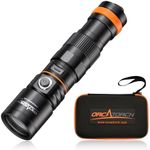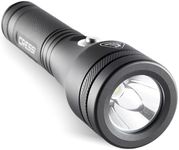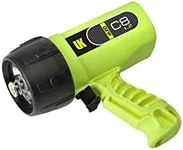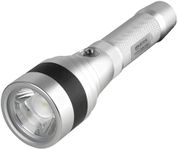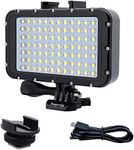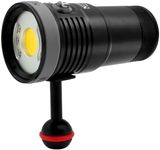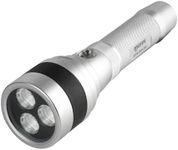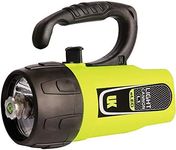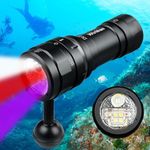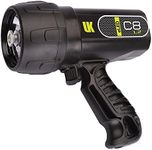Buying Guide for the Best Dive Lights
Choosing the right dive light is crucial for ensuring a safe and enjoyable underwater experience. Dive lights are essential for illuminating your surroundings, signaling to your dive buddy, and enhancing the colors and details of the underwater world. When selecting a dive light, consider the type of diving you will be doing, the conditions you will encounter, and your personal preferences. Here are some key specifications to help you make an informed decision.Brightness (Lumens)Brightness, measured in lumens, indicates how much light the dive light emits. This is important because it determines how well you can see underwater, especially in low-light conditions or at greater depths. Dive lights typically range from 100 to over 1000 lumens. For night dives or murky waters, a higher lumen count (500-1000+) is recommended. For clear, shallow waters or as a backup light, a lower lumen count (100-500) may suffice. Choose a brightness level based on the typical visibility and depth of your dives.
Beam AngleThe beam angle of a dive light refers to the width of the light beam it produces. This is important because it affects how much area you can illuminate at once. Narrow beam angles (5-20 degrees) are ideal for focusing on specific objects or signaling, while wide beam angles (20-120 degrees) are better for general illumination and exploring larger areas. Consider the type of diving you do most often: for wreck or cave diving, a narrow beam is useful, whereas for reef diving or night diving, a wider beam is preferable.
Battery LifeBattery life indicates how long the dive light can operate before needing a recharge or battery replacement. This is crucial for ensuring you have enough light for the duration of your dive. Battery life can range from 1 hour to over 20 hours, depending on the light's brightness and settings. For longer dives or multiple dives in a day, a light with a longer battery life is essential. Consider your typical dive duration and frequency to choose a light with adequate battery life.
Depth RatingThe depth rating of a dive light specifies the maximum depth at which the light can be used without malfunctioning. This is important to ensure the light can withstand the pressure at the depths you plan to dive. Depth ratings typically range from 100 feet (30 meters) to over 300 feet (90 meters). Choose a dive light with a depth rating that exceeds the maximum depth of your dives to ensure reliability and safety.
Size and WeightThe size and weight of a dive light affect its portability and ease of use. This is important for comfort and convenience during your dive. Smaller, lighter lights are easier to carry and handle, making them ideal for travel and as backup lights. Larger, heavier lights may offer more power and longer battery life but can be cumbersome. Consider your preference for handling and storage when choosing the size and weight of your dive light.
Durability and Build QualityDurability and build quality refer to how well the dive light can withstand the harsh underwater environment. This is important for ensuring the light's longevity and reliability. Look for lights made from robust materials like aluminum or high-grade plastic, with features like O-ring seals to prevent water ingress. Consider the conditions you will be diving in and choose a light that can handle potential impacts, saltwater corrosion, and other environmental factors.
Light ModesLight modes refer to the different settings a dive light can offer, such as high, medium, low, strobe, and SOS. This is important for versatility and adapting to different diving situations. Multiple modes allow you to adjust the brightness to conserve battery life or signal for help in emergencies. Consider the types of dives you do and whether having multiple light modes would be beneficial for your needs.
